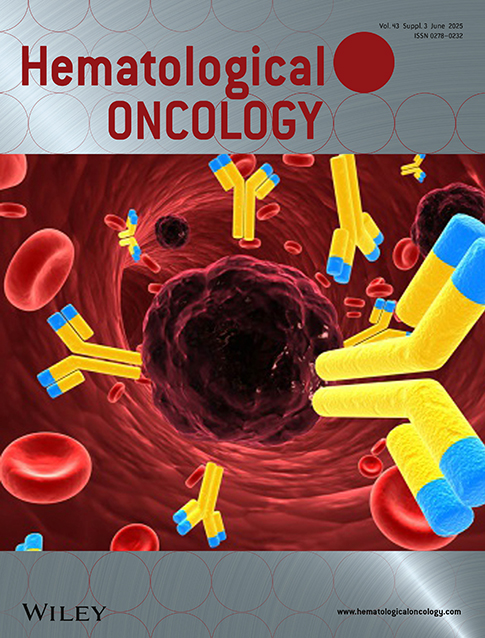586 | OBINUTUZUMAB COMBINED WITH BENDAMUSTINE IN THE TREATMENT OF MATURE B-CELL LYMPHOMA: AN OPEN-LABEL, MULTICENTER STUDY
Y. Yan, X. Hu, X. Sun, X. Xiang, Y. Wang, L. Qiu, and S. Yi equally contributing author.
Introduction: The combination of obinutuzumab and bendamustine (GB) has shown potential in clinical trials, but there is limited evidence regarding its efficacy and safety for indolent subtypes of B-cell lymphomas. The study aims to provide evidence for application of the GB regimen by conducting exploratory analyses of treatment efficacy across different lymphoma subtypes.
Methods: This study is a prospective, multicenter, single-arm clinical trial. Patients were enrolled across 8 centres between January 1, 2021 and December 31, 2024. Patients will receive a combination of GB for 6 cycles of induction treatment. After achieving ≥ PR, patients will receive obinutuzumab maintenance therapy for 2 years. After the induction treatment, the overall response rate (ORR) will be evaluated. Then, patients will be monitored during follow-up to assess progression-free furvival (PFS) and overall survival (OS). The primary endpoint of this study is ORR. Secondary end points included PFS, OS and safety. This trial was registered on ClinicalTrials.gov (NCT06415708). All patients provided informed consent before participating in the study.
Results: A total of 220 patients were enrolled in the study, including 149 follicular lymphoma (FL) patients and 71 non-FL patients, which comprised 40 marginal zone lymphoma (MZL), 16 waldenström's macroglobulinemia (WM), 3 hairy cell leukemia-variants (HCL-V), and 12 B-cell lymphoproliferative disorder-unspecified (BCLPD-U). Four patients who did not complete treatment were excluded. In 136 patients who completed 6 cycles of induction therapy and underwent efficacy evaluation, the ORR was 98.5%, with a complete remission (CR) rate of 91.9% and a partial remission (PR) rate of 6.6%. In patients who did not complete 6 cycles of therapy, the ORR was 90%, with a CRR of 61.3% and a PRR of 28.7%. The CRR in patients who completed 6 cycles was significantly higher than in those who did not complete 6 cycles (p = 0.001). There were no statistically significant differences in OS and PFS between the FL group and the Non-FL group (p = 0.180 and p = 0.084). A total of 24 patients (10.9%) developed infections, with no statistically significant difference in infection rates between the two groups (p = 0.520). The multivariate Cox regression analysis indicates that β2-microglobulin is an independent risk factor for PFS and OS.
Conclusion: This study is the first large-scale cohort study in China on the application of the GB regimen in indolent lymphoma, providing new treatment insights and data support for patients with newly diagnosed mature B-cell lymphoma, filling this gap. The study shows that the GB regimen demonstrates a high ORR and an acceptable safety profile in the treatment of newly diagnosed mature B-cell lymphoma patients. Future studies could consider further validating the efficacy and safety of the GB regimen in larger sample sizes, with longer follow-up periods, and in specific subtypes.
Encore Abstract: EHA 2025
Keywords: indolent non-Hodgkin lymphoma
No potential sources of conflict of interest.




